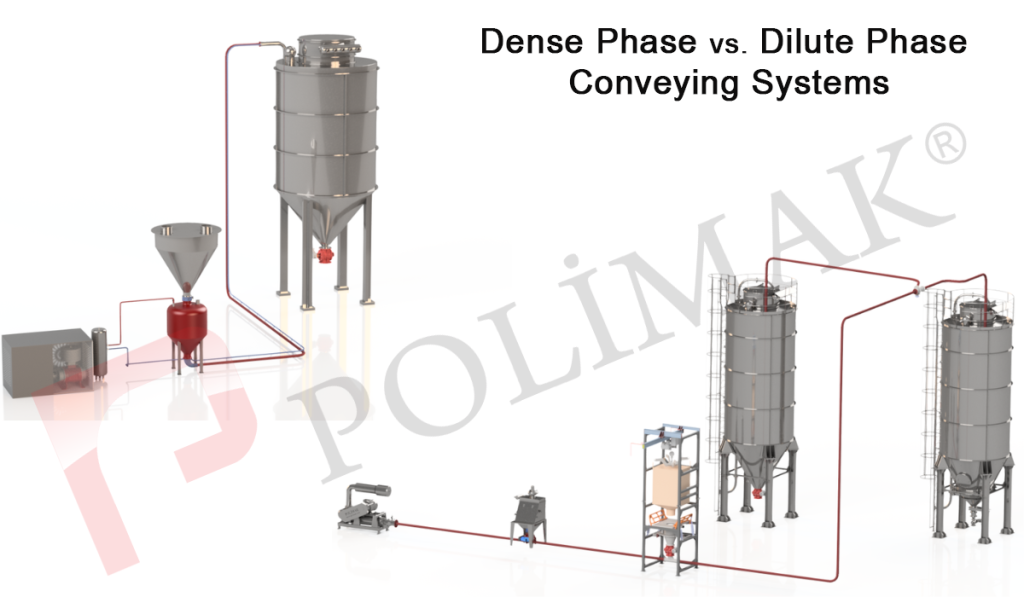
With regard to bulk material handling and transfer in various industries, pneumatic conveying systems provide a wide range of benefits compared to other mechanical systems. Pneumatic conveying systems are designed based on the type of the conveyed bulk material and they are generally differentiated on the basis of the material flow pattern inside the conveying pipeline as dilute phase or dense phase. Hence, for this read, we are going to explore the contrast between Dilute Phase and Dense Phase pneumatic conveying systems.
| SPECIFICATION | DILUTE PHASE SYSTEM | DENSE PHASE SYSTEM |
| Conveying Velocities | High air velocities of approximately 15m/s to 25m/s |
Low air velocities of approximately 1m/s to 12m/s |
| Pressure Ranges | Low pressures below 1bar(g) Pressure system: 0.1bar(g) to 1bar(g) Vacuum systems: -0.5bar(g) to -0.1bar(g) |
High pressures above 1bar(g) Pressure system: 1bar(g) to 7bar(g) Vacuum systems: -0.95bar(g) to -0.5bar(g) |
| Conveying Distances | Preferably between 0 to 200 meters | Typically between 50 to 400 meters |
| Air-to-Solid Ratio | High air to bulk material ratio | Low air to bulk material ratio |
| Ideal Materials | Preferably non-abrasive, lightweight, powdered and granular bulk materials | Preferably fine, abrasive and fine bulk materials |
| Air Volume and Pipe Ø Size | High air volume and typically larger conveying pipeline diameter for the same capacity/throughput as dense phase | Low air volume and typically smaller conveying pipeline diameter for the same capacity/throughput as dilute phase |
Conveying air velocities in the two types of pneumatic conveying system may give rise to other factors such as bulk material degradation and segregation as well as wear and tear of the systems’ pipeline.
In dense phase systems, bulk material degradation and segregation in the conveying pipeline is lower because of less intensive impact on the internal surface of the pipeline. On the other hand, degradation and segregation of bulk solids in the pipeline is higher because of more intensive impact on the pipeline internal walls. Less wear and tear is experienced in dense phase systems due to low air conveying velocities, whereas high wear and tear is noticed/experienced in dilute phase systems due to high air conveying velocities.